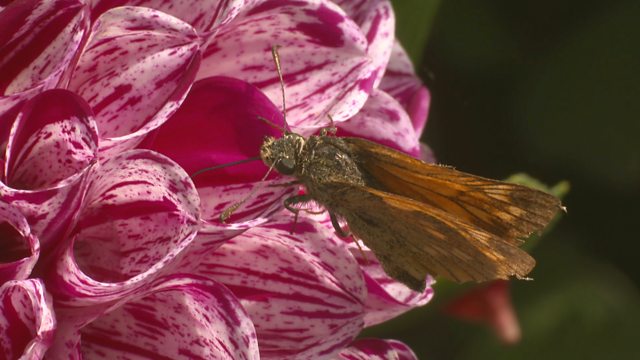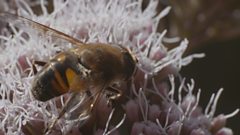
Episode 21
Gardening magazine. Monty Don gets tips on keeping lawns pristine during hot summers from RHS Hyde Hall, whilst Carol Klein learns about garden wildlife from RHS Wisley.
It is summer and it is the perfect time to get out and about visiting gardens. With that in mind, Monty Don leaves Longmeadow to explore the beautiful gardens at RHS Hyde Hall in Essex. He seeks inspiration from their amazing dry garden and discovers how they manage to keep their lawns looking pristine in such a hot summer.
Carol Klein travels to RHS Wisley to learn more about the creatures that inhabit our beds and borders. She finds out which insects visit our flowers, feed on our foliage and, most importantly, help keep our plants healthy.
And we meet a couple in Bournemouth whose extraordinary front garden never fails to wow the RHS Britain in Bloom judges.
Last on
Clips
-
![]()
Blooming front garden
Duration: 04:41
-
![]()
Border bugs
Duration: 06:03
Visiting gardens
Μύ(·Ι·Ι·Ι.²Τ²µ²υ.΄Η°ω²µ.³ά°μ)
RHS Garden Hyde Hall

Hyde Hall is open year round, so if you’re in the area and fancy a visit, click on the link below for more information.
RHS Garden Hyde Hall
°δ°ω±π±π±θ³σ±π»ε²µ±πΜύ³Ά²Ή²Τ±π
Rettendon
Chelmsford
Essex
CM3 8ET
Tel: 0845 265 8071
(www.rhs.org.uk)
Britain in Bloom
Margaret and Chris Dudden create magnificent displays in their front garden for themselves, passers-by and the Britain in Bloom judges. This year, they have used The Red Arrows 50th display season as their theme and hope to scoop another prestigious Britain in Bloom award.
The link below has lots of information about the campaign, how to get involved and, later in the year, the results of the Britain in Bloom 2014 competition.
(www.rhs.org.uk)
Lawn care

(www.rhs.org.uk)
Jobs for the weekend: Tie in long rose shoots
(www.rhs.org.uk)
Jobs for the weekend: Cut back untidy perennials
(www.rhs.org.uk)
Jobs for the weekend: Prune wisteria
(www.rhs.org.uk)
Credits
| Role | Contributor |
|---|---|
| Presenter | Monty Don |
| Presenter | Carol Klein |
| Series Producer | Christina Nutter |
| Series Editor | Liz Rumbold |
Broadcasts
- Fri 22 Aug 2014 21:30
- Sun 24 Aug 2014 08:00
- Thu 4 Sep 2014 10:05


